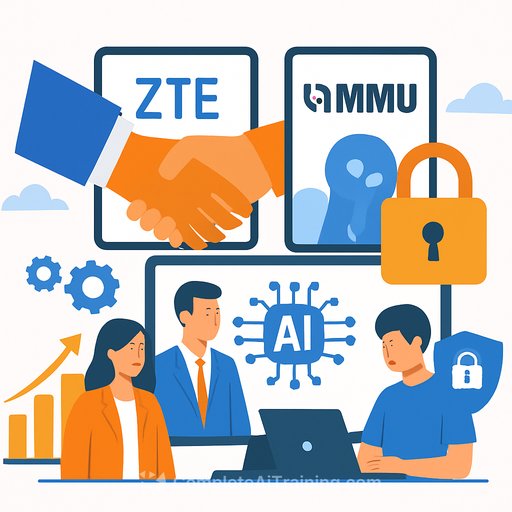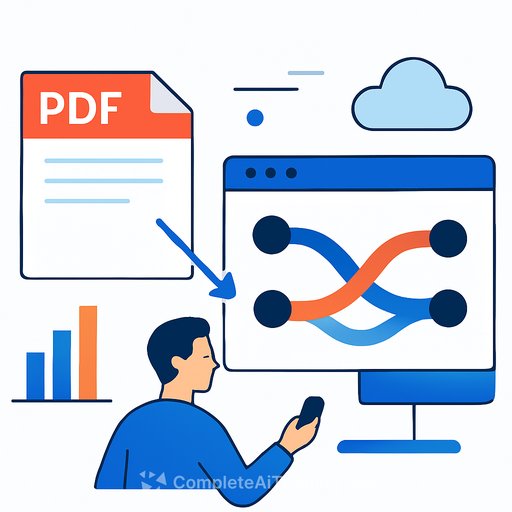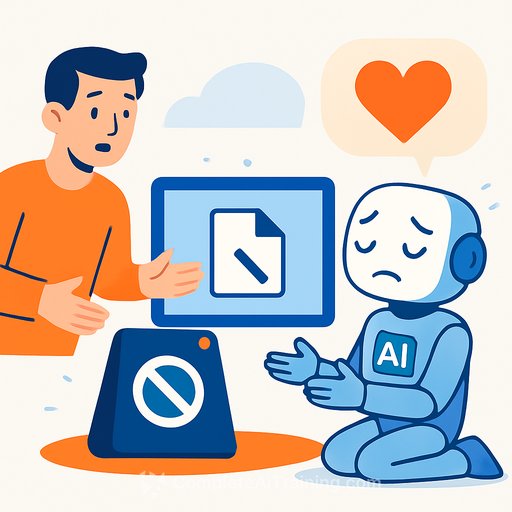AI Agents Are Terrible Freelance Workers - Here's the Practical Takeaway for IT and Dev Teams
A new benchmark put autonomous AI agents to work on real freelance-style tasks. The result: they struggled with end-to-end delivery, unclear specs, platform friction, and long feedback loops. That doesn't mean agents are useless. It means you need to change how you use them.
If you're expecting "set-and-forget" agents to replace staff, you'll be disappointed. If you use them to speed up well-bounded work with tight guardrails, you'll get value today.
What the benchmark signals
The test asked agents to find work, interpret requirements, do the job, and get it accepted. They failed often on brittle browsing, misreading instructions, and producing deliverables that wouldn't pass a basic client review. The gap to human-level autonomy in open environments is still wide.
That's a useful constraint. It tells us where agents break-and where they can pay off when the environment is controlled.
Why agents stumble on online freelance tasks
- Ambiguous briefs: Vague requirements, changing scope, and unspoken expectations.
- Long-horizon work: Multi-step tasks with dependencies, revisions, and acceptance criteria.
- Fragile web automation: Anti-bot measures, dynamic UIs, auth flows, and rate limits.
- Quality and taste: "Good enough" isn't enough when a client wants polish and context.
- Trust and payment: Profile reputation, negotiation, and platform policies that agents can't handle safely.
Where agents actually help today
- Structured, repetitive tasks: Data cleaning, list building, CSV transformation, and API-driven workflows.
- Drafting with constraints: Emails, briefs, test plans, and docs with a clear template and examples.
- Coding with tests: Small functions, refactors, and fixes when unit tests define success.
- Back-office routines: Ticket triage, form filling, QA checklists, and report generation inside your own systems.
Playbook: Make agents useful in production
- Decompose work: Break big jobs into atomic tasks with clear inputs, outputs, and acceptance checks.
- Use tools, not raw browsing: Prefer APIs, SDKs, and internal services over clicking through random sites.
- Add checkers: Run linters, unit tests, schema validators, and content policies as automatic gates.
- Close the loop: Compare outputs to ground truth, examples, or rubrics before anything reaches a human or client.
- Human-in-the-loop: Insert review at high-risk steps-requirements, final delivery, and edge cases.
- Telemetry and prompts as code: Version prompts, log decisions, track failures, and treat changes like code changes.
- Constrain context: Feed only what's needed via retrieval or task packs; avoid prompting with noisy data dumps.
- Sandbox and rate-limit: Run agents in isolated environments with strict permissions and budgets.
- Evaluate regularly: Keep a test suite of real tasks. Measure success rate, time-to-complete, and review effort.
Practical workflows for IT and developers
- PR triage: Agent labels, summarizes, and suggests reviewers; humans approve. Add a linter/test gate.
- Issue grooming: Convert raw bug reports into reproducible steps, attach logs, and propose labels.
- Customer support macros: Draft responses mapped to policy and knowledge base; support leads edit and send.
- SEO/Docs briefs: Generate outlines with references, target keywords, and snippet candidates; editor curates.
- Data cleanup: Normalize fields, dedupe, and validate against schemas before import.
How to scope agent projects that don't fail
- Define success upfront: Short rubric, sample outputs, and "reject if" rules.
- Start narrow: One workflow, one data source, one system of record.
- Automate acceptance: Tests and validators decide pass/fail, not vibes.
- Plan handoffs: Clear points where humans review, edit, or take over.
- Track ROI: Time saved, error rate, rework time, and incident count.
What to watch next
- Web task benchmarks: Open web environments like WebArena help compare agents on realistic tasks.
- Policy and risk practices: Frameworks such as the NIST AI Risk Management Framework can shape safer deployments.
- Longer context and better tools: Improvements in retrieval, memory, and reliable APIs will matter more than bigger models alone.
Bottom line
Agents aren't ready to win gigs on freelance platforms without heavy supervision. But they can shave hours off work that's repetitive, structured, and testable. Treat them like junior teammates with strict guardrails-not autonomous employees-and you'll get results without surprises.
Level up your team's skills
If you're building these workflows, upskilling your staff pays off. Start with practical courses and templates focused on automation and prompt workflows.
- Automation resources for real-world use cases and playbooks.
- AI Automation certification to standardize how your org designs, evaluates, and governs agentic systems.
Your membership also unlocks:






